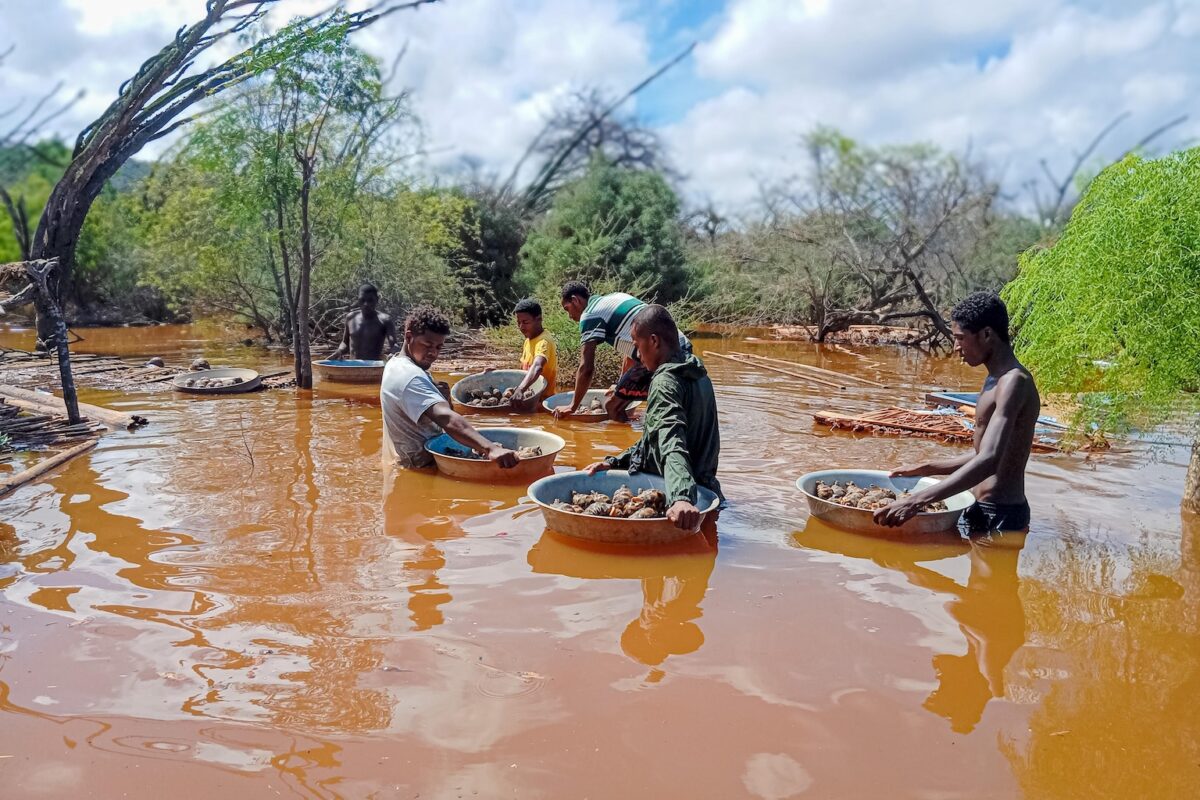Devastating flood forces relocation of 10,000 tortoises at Madagascar sanctuary

ANTANANARIVO — In January, severe flooding caused by two cyclones severely damaged Itampolo’s Lavavolo Tortoise Center, located in Ampanihy on the southwest coast of Madagascar. The center is managed by the Turtle Survival Alliance and is dedicated to caring for rescued tortoises.
Radiated tortoises (Astrochelys radiata) and spider tortoises (Pyxis arachnoides), both critically endangered species native to the southern regions of Madagascar, are commonly targeted by local and international traffickers. The TSA team has spent years working to protect them — and now faces the dual threat of trafficking and extreme weather events caused by climate change.
The region usually receives scant rainfall, but in January experienced torrential rains that killed more than 800 tortoises and caused an estimated $150,000 of damage to property and infrastructure.
“Previous flooding was barely ankle-deep. This year, water rising up to 180 centimeters [6 feet] swallowed up half of the [tortoise] enclosure in 24 hours,” Hery Razafimamonjiraibe, TSA’s country director, told Mongabay. The affected areas also included staff members’ homes, access points and various other facilities.
Most of the tortoises died of suffocation. “The tortoises took shelter under roofed structures in the enclosure, but got trapped there. Other animals were already in poor condition because they had only been rescued a few days before the devastating weather. They were still tired when the first waves hit,” said Tsanta Fiderana Rakotonanahary, head of veterinary support at TSA.

“We had to get our priorities in order. The safety and security of the employees came first, followed by rescuing the animals. We mobilized our available resources to save as many animals as possible,” Rakotonanahary said.
The shade structures were quickly dismantled so they could float and act as rafts in the floodwaters for rescued animals. More than 10,000 tortoises survived and were transported to higher ground. “The small and young ones were transported first, because they were more at risk of being carried away by the currents. This also allowed the rescuers to carry more animals at once,” Rakotonanahary said.
The Lavavolo site is dominated by a limestone cliff bordering the Mahafaly Plateau, which overlooks the Indian Ocean. The privately managed site is located on a plain between the cliff and the sea, an ideal place for tortoises to roam in their natural habitat. “A lot of wild tortoises live around the refuge and on top of the cliff,” Rakotonanahary said.
Several law enforcement officers and local volunteers contributed to the January rescue efforts. Once the drenched tortoises were safe and the waters began to recede, the next priority was food. “Local residents helped us a lot with feeding them. Between 2,000 and 2,500 kilos [4,400-5,500 pounds] of fresh greens per day were provided,” Rakotonanahary said.
“Under no circumstances could their food be neglected, as it was vital to their recovery after the huge stress they had just experienced,” she added. While the tortoises were being fed, a team of veterinarians was deployed to examine any animals injured by the flooding.

Reconstruction later this year
The TSA says it wants to rebuild the damaged infrastructure soon, but carrying out any major work on the site before the end of the rainy season in April-May is too risky. This means the organization won’t be able to return the surviving tortoises to the flood-prone areas of the enclosure until later in the year.
Several temporary locations on the Mahafaly Plateau have been identified and prepared to keep the reptiles safe while the conservation site is out of commission. “The smallest ones will be relocated to our tortoise conservation center in Tsihombe Androy [a nearby district],” Razafimamonjiraibe said.
The relocation aims to reduce the pressure of accommodating so many tortoises at Lavavolo while it recovers from the flooding. The reintroduction of animals into the wild remains a priority.
As of January, engineers were still evaluating how to drain floodwaters from the low-lying areas of the conservation center. The plan is to rebuild the site’s infrastructure to better withstand future climatic
